Hot air balloons have a long and storied history, dating back to the early 18th century. But what many people don’t know is that these humble contraptions were the first vehicles to be used for space exploration. SpaceX, Blue Origin, Virgin Galactic, and NASA stand on the shoulders of men who explored the atmosphere and space with no modern technology. With Artemis 1 launching it’s lunar mission, it is a good time to look back and understand what made the first flights to space possible.
Balloons ultimately won the space race and massively contributed to Apollo’s success. Balloons were the first to go to the stratosphere, the first to bring man to 100,000 feet above the earth. They were used by the military for spy operations, releasing satellites, and in 1964 launching the world’s largest spacecraft with NASA.
So how did balloons come to be such an important part of space exploration? And what mysteries of the universe did they unlock?
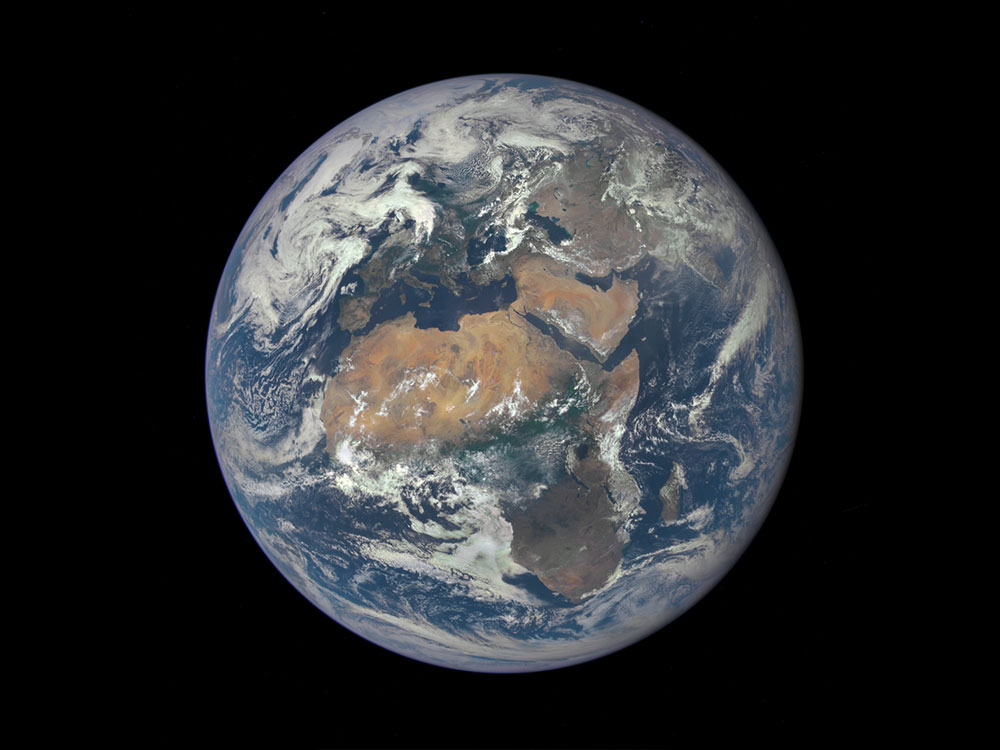
Balloons Paved The Way For Space Exploration
In the early 20th century, a Swiss scientist named Auguste Piccard began experimenting with pressurized capsules in an effort to make space travel possible. His work would eventually lead to the first manned space flight and set the stage for future space exploration.
Piccard’s first attempt was The Explorer I, a high-altitude balloon-based craft filled with hydrogen that reached over 16,000 feet. However, Piccard was not content with just breaking new altitude records – he wanted to explore what was beyond them.
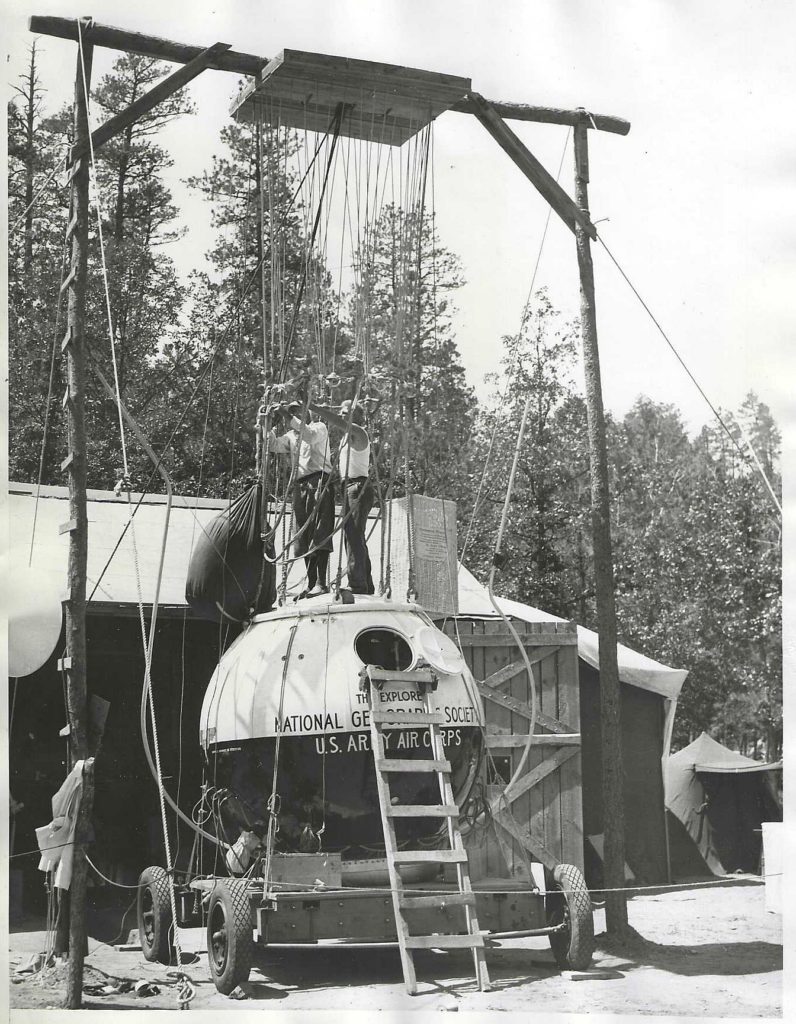
Piccard built The Explorer II, a pressurized capsule that could be attached to a high-altitude balloon and carried into space. On May 27th, 1931, The Explorer II, a massive balloon, made its maiden voyage, reaching an altitude of over 52,000 feet before landing safely back on earth.
This achievement marked the first time that man had ever traveled into the stratosphere unaided by machines. It also paved the way for further space exploration – including NASA’s landmark Apollo missions in the 1960s.
First Human Above 100,000 Feet
In 1960, Winzen Research, a balloon company that manufactured high altitude balloons, built a balloon for the US airforce allowing Joseph Kittinger to jump from a balloon at an altitude of 102,800 feet. Kittinger was a colonel in the United States Air Force and made history with his space jump mission on August 16th, 1960. He became the first person to take a one-way balloon trip to the stratosphere and jump from a stratospheric balloon at an altitude of over 100,000 feet.
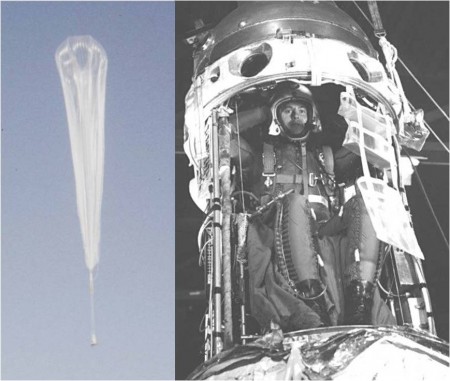
Kittinger’s jump was part of Project Excelsior – a military program designed to test the limits of human endurance. The jump went without incident, but Kittinger suffered extreme pain and discomfort due to the cold temperatures and low oxygen levels at such high altitudes. The learnings from Kittinger’s high-altitude balloon jumps would give American astronauts the technical information they needed to advance safety when going to space.
Despite these challenges, Kittinger’s record-breaking jump helped pave the way for space exploration – and remains one of the most impressive feats in aviation history.
Balloons And The Space Race
The Soviet space program put Russia in the lead of the space race, with the release of the Spudnik satellite and Yuri Gagarin becoming the first astronaut in 1961. He was the first human to reach space, spending 108 minutes at 187 miles above the earth.
Balloons As A Vehicle For Rockets
In the 1950s, balloons were being ejected by rockets, and rockets were being assisted into space by balloons. In Project Farside, huge General Mills polyethylene balloons, among the largest ever flown, lifted a series of two thousand pound rockets a hundred thousand feet above the Earth. No balloons ever before had gone to such an extreme altitude lifting so much weight. The rockets were fired from over 100k feet and were able to soar four thousand miles out into the unknown to obtain scientific data central to man’s mastery of space. These classified projects were recently released to the public.
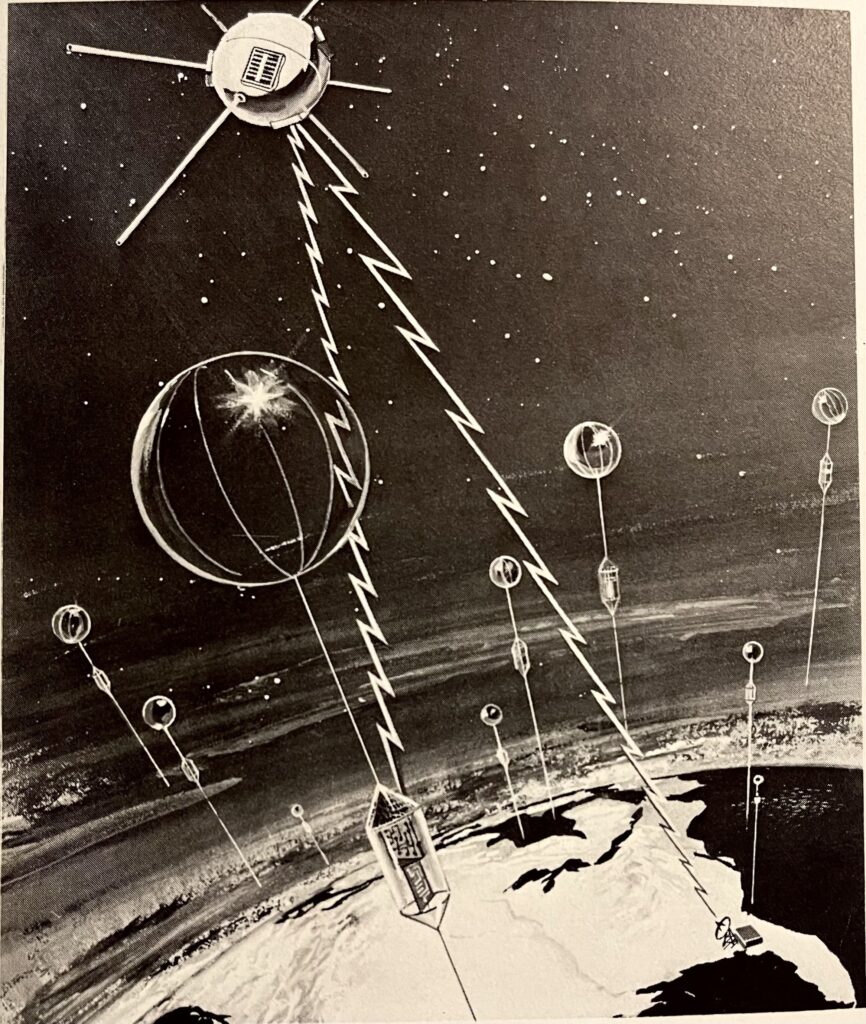
A total of six Farside rockets were fired from Eniwetok in late 1957. A secondary goal of Farside was to test concepts for a larger five-stage follow-on vehicle, which was to reach the vicinity of the moon. Although this project never materialized, balloon use continued in the 1960s as satellites and to help NASA Saturn boosters return safely.
Many rockets continued to deploy weather balloons and satellites at altitudes of 175,000 to 250,000 feet throughout the 1960s and 1970s. These meteorological balloons in the ’60s provided real-time weather information and direct communication through balloon satellite networks.
The World’s Largest Space Craft Goes To Orbit…It’s A Balloon
On Jan 25th, 1960, the 13-story Echo I “Satelloon” rocketed into space from the Pacific Missile Range in California. A pill-shaped canister atop a rocket held a giant balloon over 135 ft diameter plastic and aluminum sphere. The sphere inflated an hour after launching as the rocket moved over South Africa. During its lifetime in orbit, the Satelloon would be viewed by more people than any other man-made object in space and was by far the largest spacecraft ever to be orbited by man.
The Echo I was boosted into space by a Thor Agena rocket. It was packed in tight accordion folds, with an 11 cubic foot canister, which separated some eight hundred miles above South Africa, allowing the Satelloon to unfold and inflate to its full size of 1.3 million cubic feet. The Satellon was the most advanced communications satellite program and led the world towards a global communication Network. The Satelloon stayed in orbit for eight years, was in a thousand-mile orbit, and traveled nearly 500 million miles at an orbital speed of 16,000 mph.
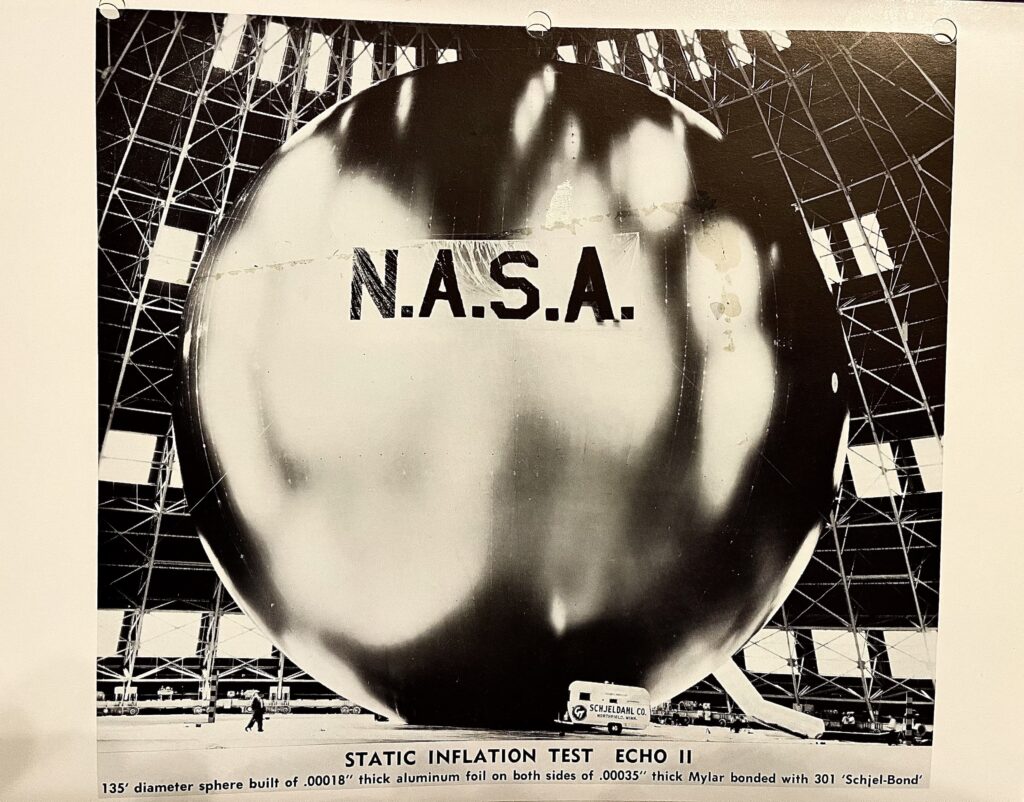
First communication via satellite…a balloon
When the Satelloon had successfully inflated, President Eisenhower sent the first message via space, and the communication was received across the world. Russia may have been the first to send a satellite (Sputnik) into space, but the US had created the first satellite to reflect communication from the earth and send the communication right back to it. Soon after the Satelloon was used to communicate a voice message, it was used to transmit the first video communication.
One of the most fascinating things about the Echo I and the Echo II is that anyone could conduct experiments, as it was a completely peaceful device. Any means of furthering people-to-people communication throughout the world is desirable. Both the Echo I and Echo II were giant mirrors in the sky that reflected radio signals beamed to them.
Saturn Rocket Booster Return To Earth Via…Hot air balloon
Although Elon Musk has been successful in reusing boosters, SpaceX wasn’t the first to have controlled landings of rocketship boosters. The first successful controlled descents of rocket boosters were tested as part of the Saturn program in the 60s. In 1965, the Paravulcoon was designed as a unique recovery system combining the reliability of a parachute and the versatility of a hot air balloon. It was developed in a joint mission by Raven Industries and Honeywell as a means of securing a safe, soft recovery of sensitive payloads and reusable boosters. To this day, it was the only recovery system capable of hovering at a preselected altitude and providing a controlled landing with touchdown velocities of only a few feet per second.
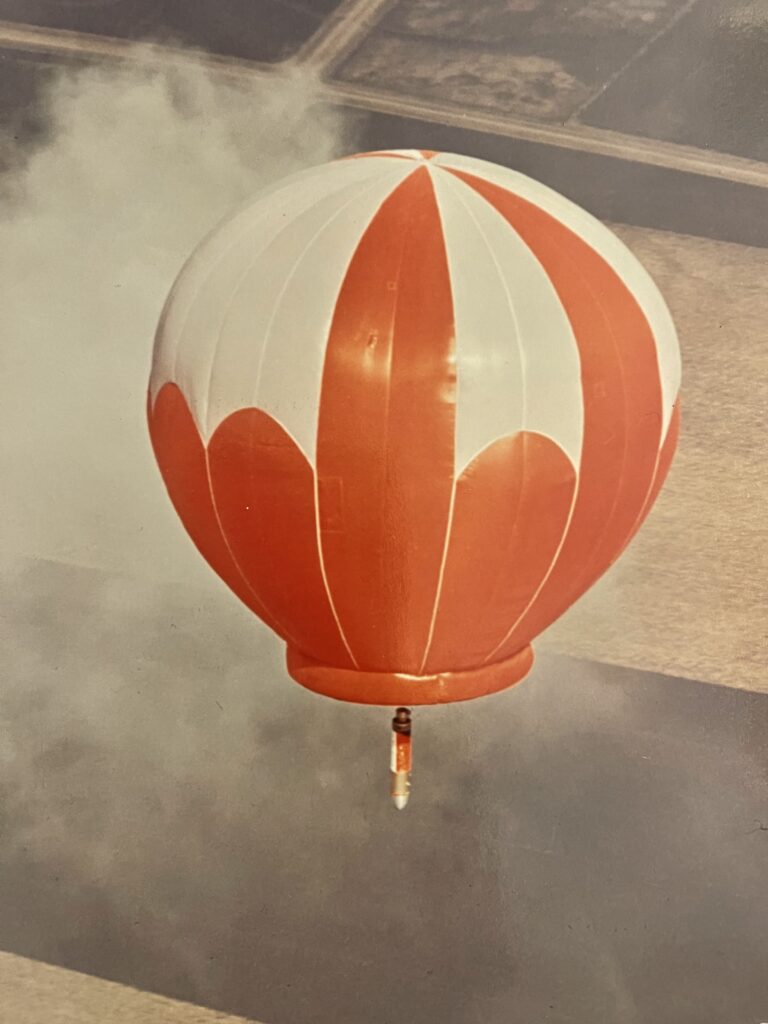
The system used the buoyancy of the hot air in an aerially deployed and heated balloon to provide atmospheric flotation and controlled descent of the recovered body.
The activation of the system began with a large parachute to decelerate the descent to a subsonic velocity. At a pre-determined altitude, the Paraculcoon deployment was initiated. The balloon was extracted from its storage and streamed behind the payload body. As the system descended, the envelope was filled by ingesting air through its open throat, and peripheral inflation scoops. When the balloon was fully inflated by ram air pressure, the envelope was heated through the open throat by an initial heat generator. The resulting buoyancy of the hot air further decelerated the system until buoyant equilibrium was attained. By controlling the rate at which sustaining heat was added to replace steady-state heat losses, the payload was able to be floated at a preselected altitude or lowered to the ground at a controlled rate.
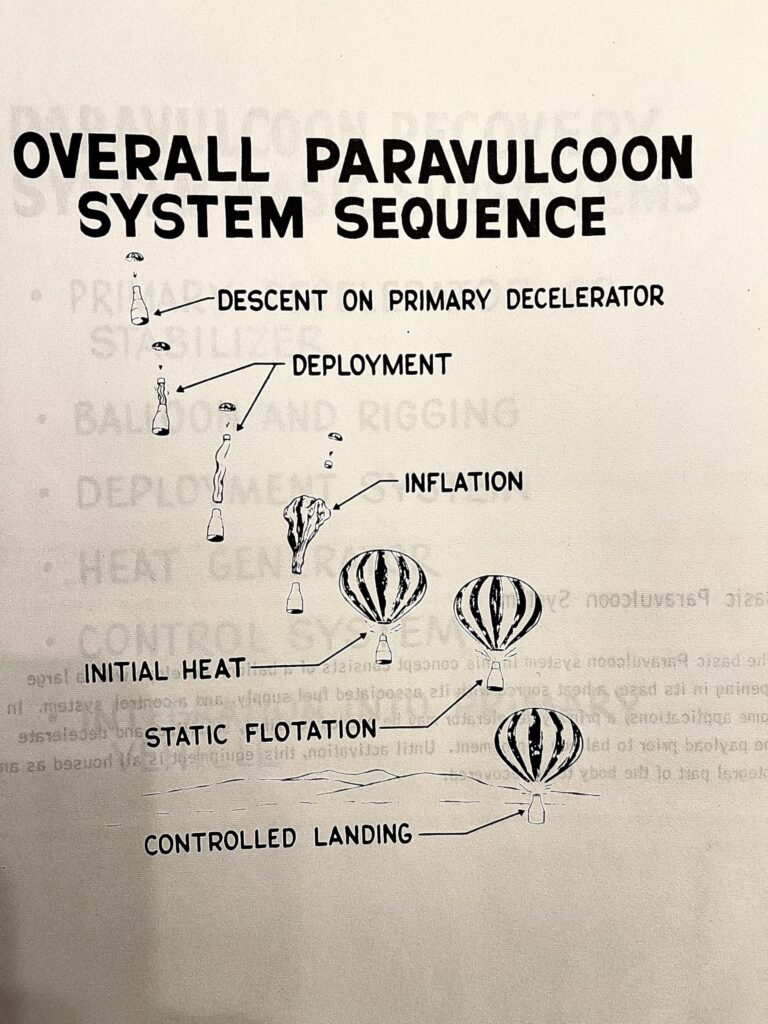
With the improvements in lightweight high-temperature flexible materials in the 1960s, the Paravulcoon was able to deploy the balloon in hypersonic pre-entry, creating a single-stage recovery for primary stabilization, deceleration, and terminal recovery.
The Paravulcoon ran over 140 test flights and was suitable for recovering payload weights ranging from 5000 – 400,000 pounds. Upon ignition of the burners, it took 40M BTU and over 220 seconds to arrest the descent of a 250,000-pound payload. The Burners were ignited at 20,000 feet, and the balloon reached equilibrium to hover at 5,000 feet.
The Paravulcoon had multiple applications, including manned satellites, space shuttles, space vehicles, space payloads, aerial snatching, and rocket booster recovery. This photo shows one of the tests for the Saturn booster recovery in 1965.
Future Uses Of Balloons In Space
The unique capabilities of the balloon will continue to make it a practical, useful scientific device for many years to come. Although we now have rockets that can take tourists to space, the balloon will always be the most economical vehicle, providing one of the most reliable methods of attaining the upper atmosphere.
For those interested in space tourism, there are a variety of options. You can take a rocket to space with SpaceX, Virgin Galactic, or Blue Origin and experience weightlessness, or you can take a 1960s-style helium-filled balloon. The tech is good and hasn’t changed a lot since the 60s…Space Perspective is a space tourism company that is using the same plastic balloon technology that high-altitude balloon experiments have used for years. We are excited about all the options for space travel but are most excited about the future opportunities to take stratospheric flights via a lighter-than-air vehicle.
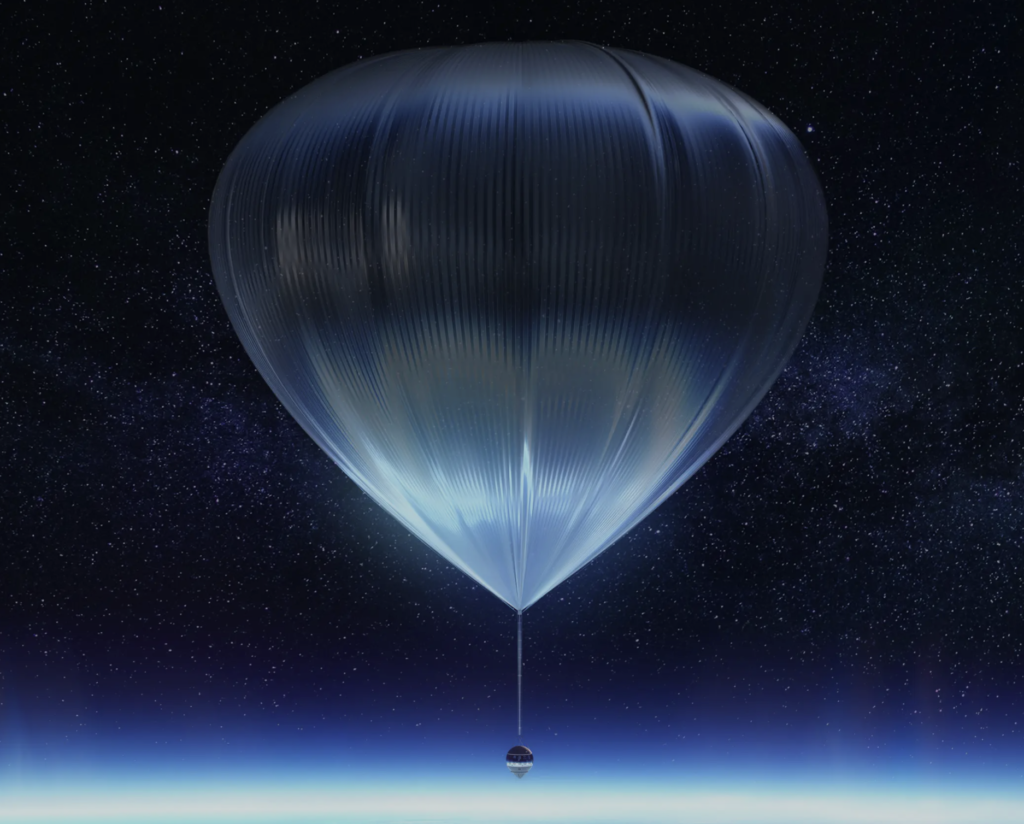
In the future, balloons and balloon-like devices will find new applications in outer space. This author believes the next use may be for the collection of solar energy. Just a few pounds of aluminized plastic film could be shaped into a giant mirror capable of collecting many kilowatts of power. The same technique could make huge microwave reflectors and radio telescopes. Because of the very low mass-to-size ratio, inflatable containers may make ideal space dwellings where humans can live.
Without the pioneers of balloon technology, space would still not be accessible today. Balloons have been used for centuries to transport people and objects into the sky, and they continue to play a vital role in space exploration. Thanks to the ingenious inventors who developed recovery systems like the Paravulcoon, we are now able to safely recover sensitive payloads and reusable boosters in space. Without these innovations, our understanding of space would be far less advanced than it is today.
Additional FAQs About Ballooning’s Contribution To Winning The Space Race
Who Won The Space Race?
The United States won the space race, as they were the first country to land a human on the moon. However, the United States also won the satellite race by creating the first back-and-forth communication with the Satelloon.
How Did The Space Race Impact The Cold War?
The space race was a competition between the United States and the Soviet Union to achieve supremacy in space exploration. The space race began in 1957 when the Soviet Union launched Sputnik 1, the first artificial satellite. The United States responded by launching Explorer 1, the first American satellite. However when the United States successfully launched Echo 1 in 1964, creating the first bi-directional communication with a satellite.
The space race intensified during the Cold War as both sides sought to demonstrate their superiority over the other. The Soviets were the first to send a man into orbit, with Yuri Gagarin’s flight on April 12, 1961. The United States followed suit on May 5, 1961, with Alan Shepard’s suborbital flight.
The space race continued until 1975 when the United States and the Soviet Union signed the Apollo-Soyuz Test Project Agreement, which signaled an end to the Space Race and ushered in a new era of cooperation between the two countries.
What Was The Venus Balloon Mission
In 1985, the Vega Venus ballooning missions were launched as part of the Soviet Union’s Vega program. The goals of the missions were to study the atmosphere of Venus and to test out new technology for future planetary exploration missions. Each balloon traveled about 30 percent of the way around the planet at a float altitude near 54 kilometers and collected data on the composition, pressure, and temperature of the planet’s atmosphere. The Vega program was a major success, and the data collected during the missions is still being analyzed today. By 1991, five successful launches had been completed, and all six balloons survived their journeys around Venus. This data has helped scientists gain a better understanding of our closest planetary neighbor and paved the way for future exploration. The Vega program is an important part of planetary science and a perfect example of the human ability to explore, discover, and understand our universe.
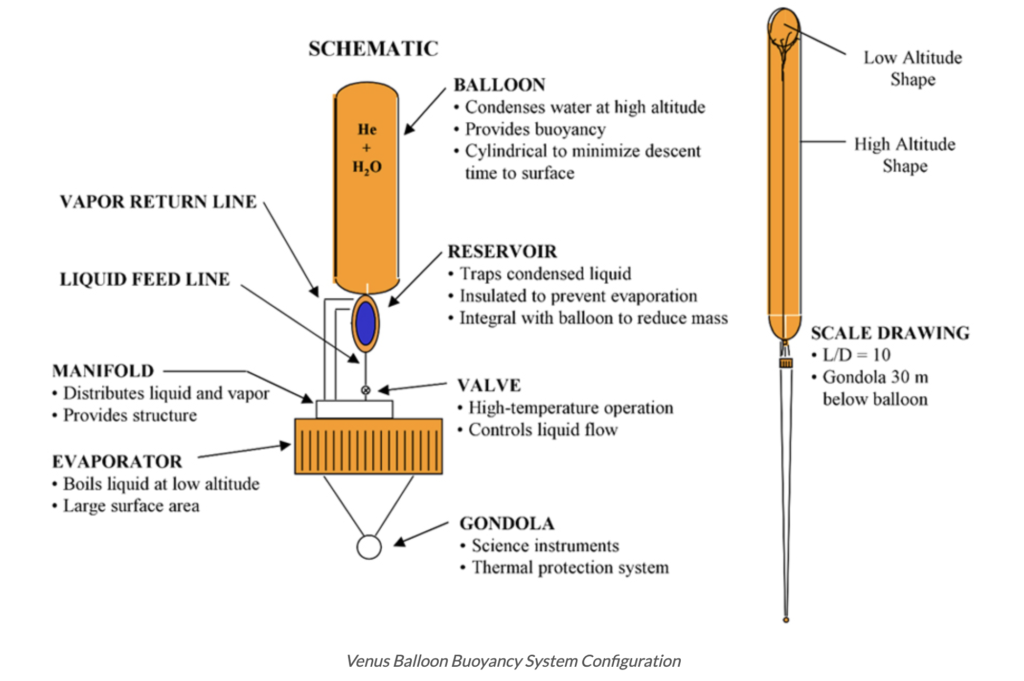
Is There A Balloon That Can Go To Space?
Balloons have been going to space since the early 1960s. The Satelloon launched in 1960, and Satelloon II in 1964 was a 135 ft in diameter balloon that spent 8 years in space. A new company called Space Perspective is taking balloons to the edge of space at 100k ft. This year a Russian is trying to take a hot air balloon to 100k feet.
How Big Is The Space Balloon?
Space balloons are very big! The Satelloon in 1964 was 135 feet in diameter and could be seen during night and day. The passenger balloon looking at taking people to the edge of space is a few million cubic feet.
Want To Learn How Hot Air Balloons Work?
We actually wrote an in-depth article about how balloons work and how they are steered! Check it out.
